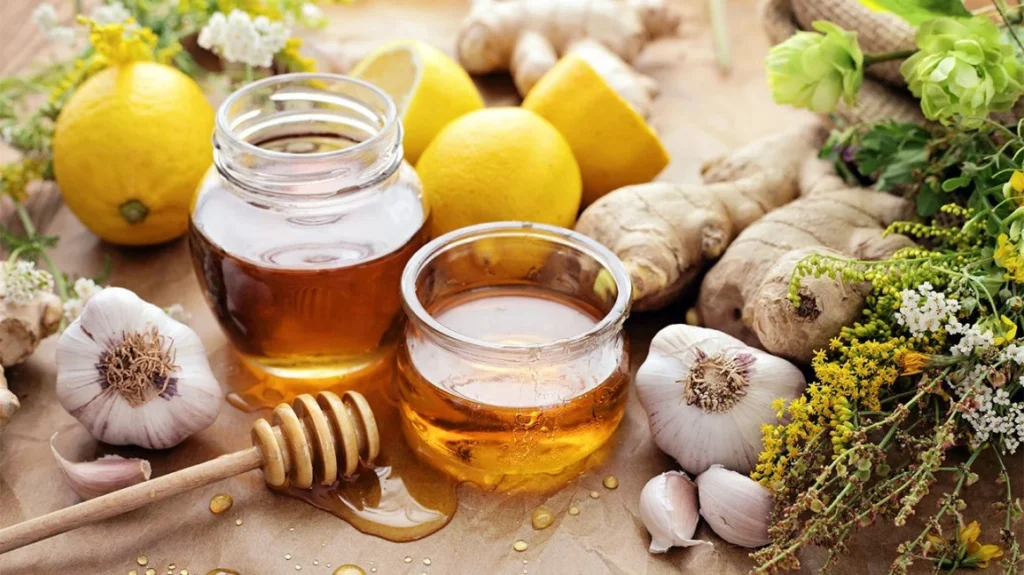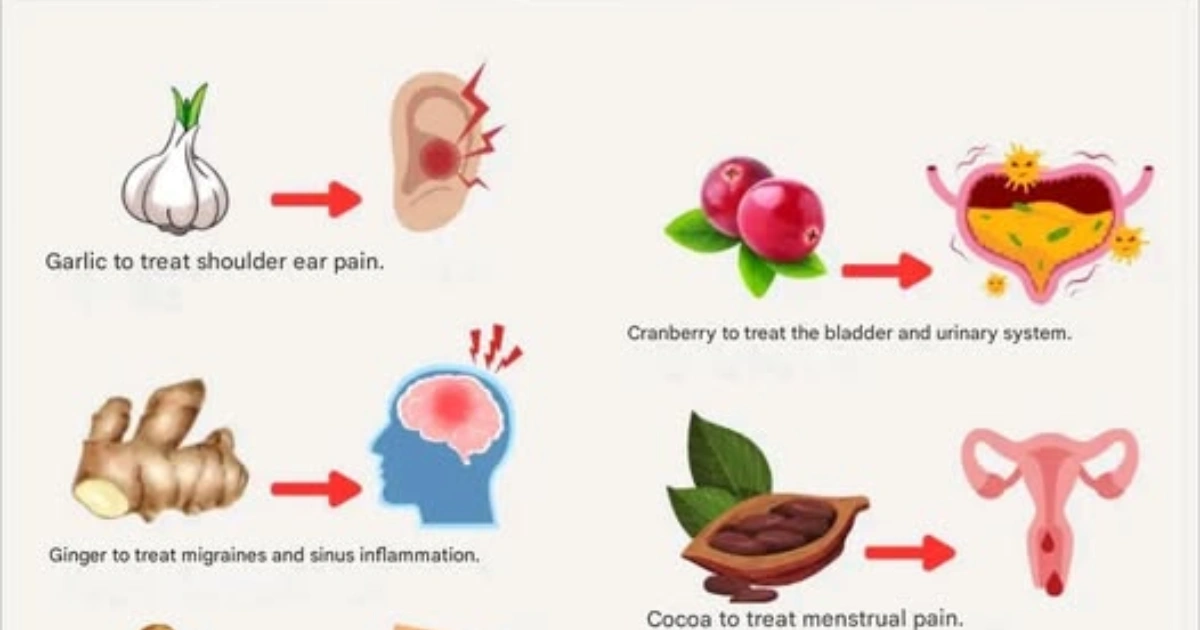🌿
Pain is one of life’s most unwelcome guests, and while over-the-counter medications offer quick fixes, they often come with side effects. If you’re looking for gentler, chemical-free solutions, nature has already done the hard work. Garlic and ginger, two everyday plants found in kitchens worldwide, offer powerful pain-relieving properties—without additives or synthetic compounds.
Want to grow your own remedies? Learn how to start a medicinal herb garden to keep healing at your fingertips.
🍃 Why Natural Pain Relief Works
Using plants like garlic and ginger taps into centuries of holistic wisdom. These remedies are:
- Gentle on your body: Support healing without overwhelming it
- Multifunctional: Tackle pain, inflammation, and more
- Accessible: Available fresh, dried, or in supplements
- Sustainable: Reduce waste and reliance on pharmaceuticals
Incorporating them into daily rituals not only eases discomfort, but promotes better digestion, sleep, and mental clarity.
🧄 Garlic: For Ear Pain and Beyond
Garlic contains allicin—a natural compound known for its antibacterial and anti-inflammatory effects. It’s especially effective for earaches caused by mild infections or inflammation.
🌟 How to Use Garlic
- Crush one fresh garlic clove
- Wrap it in clean gauze or cloth
- Place gently near the outer ear (not inside) for 10–15 minutes
- Repeat twice daily until symptoms improve
This method allows garlic’s active compounds to reduce inflammation without direct contact with delicate inner ear tissues.
Want to go deeper into DIY remedies? Explore natural remedies for seasonal ailments for more plant-based techniques.

⚠️ Common Garlic Mistakes
- Inserting garlic directly into the ear: Dangerous and painful
- Using sprouted or old garlic: Reduces potency
- Skipping hygiene: Always clean hands and tools before use
🫚 Ginger: Migraine and Sinus Pain Relief
Ginger’s warming effect and anti-inflammatory power make it ideal for headaches and sinus congestion. It relaxes blood vessels and promotes circulation, helping reduce pressure and pain naturally.
🌟 How to Use Ginger
- Grate 1–2 teaspoons of fresh ginger
- Steep in hot water for 10 minutes
- Strain and sip slowly
Alternatively, blend powdered ginger with honey and lemon for a tasty remedy that calms inflammation.
⚠️ Common Ginger Mistakes
- Overusing ginger: Can cause heartburn or nausea
- Not steeping long enough: Weakens its effect
- Ignoring sensitivity: Test small amounts if you’re new to it
For even more options, browse the herbal pain relief recipes and build your own green medicine cabinet.
🧰 Helpful Tools and Materials 🌼
- 🍵 Infuser or strainer for herbal teas
- 🧄 Fresh garlic cloves
- 🫚 Grater or mortar & pestle
- 🧴 Clean cloth or cotton pads
- 🥄 Organic ginger powder
- 🌿 Glass jars to store infusions
🌤️ Seasonal and Regional Tips
- Winter: Garlic works wonders against cold-induced ear infections
- Spring: Ginger clears sinus pressure caused by allergies
- Summer: Chill ginger tea for a refreshing anti-inflammatory drink
- Fall: Use garlic and ginger together to boost immunity
If you harvest herbs, check out how to harvest and store medicinal plants to enjoy their benefits year-round.
✅ Why Garlic and Ginger Deserve a Place in Your Routine
- Fewer side effects than medications
- Support immune system and digestion
- Encourage mindfulness and ritual
- Cost-effective and accessible
These plants promote holistic wellness, not just symptom relief—and often complement conventional treatments beautifully.
❓ Frequently Asked Questions
Can garlic cure an ear infection?
It can ease symptoms and support recovery, but see a doctor if symptoms persist or worsen.
How often can I drink ginger tea?
1–2 cups per day is safe for most adults.
Can I use garlic and ginger together?
Yes! They can be paired in teas, soups, or topical applications for enhanced benefits.
Are natural remedies safe for kids?
Use caution. Ginger can be offered in small doses. Garlic should never go inside a child’s ear.
How fast does plant-based relief work?
Some notice improvement in hours; others need consistent use over several days.
🌼 Conclusion
Nature holds remarkable solutions for pain relief. Garlic and ginger prove that powerful healing can come from humble places—your garden, your pantry, even your teacup.
Have you tried any plant-based remedies? Share your favorite recipe, routine, or results in the comments. Let’s inspire each other to embrace more natural ways of healing.


termal kamerayla su kaçak bulma Tuzla su kaçağı tespiti: Tuzla’da su kaçağını kısa sürede tespit ediyoruz. https://www.finlandmlbforum.com/read-blog/19158
http://slotgames.bloger.by/118586/
Что сразу бросается в глаза — это философия. В тексте подчёркивается: здесь не набор услуг, а подход. Каждая деталь, от внешности до манер, от знаний до стиля общения, отбирается вручную. Статистика — только 5% девушек проходят отбор. А это, если задуматься, означает сотни отказов, чтобы в каталоге остались лишь те, кто действительно соответствует — не просто по параметрам, а по уровню мышления и поведения.
İstanbul su sızıntı bulma Su kaçağı tespiti, hem konut hem de ticari binalarda hayati önem taşır. https://sparissimo.community/read-blog/1218
подробнее здесь safelychange обменник
Мы рады пригласить вас посетить наш сайт, где вы найдете множество интересного и полезного контента. Мы публикуем материалы на различные темы для мужчин, от здоровья до одиночества и кризиса среднего возраста, чтобы вы всегда были в курсе последних новостей на эти темы. Мы уверены, что вам понравится наш контент, и вы найдете много полезного для себя. Ждем вас на нашем сайте: путаны балашиха
xwm1ds
62399 651918hello I was extremely impressed with the setup you used with this site. I use blogs my self so excellent job. definatly adding to bookmarks. 998711
https://t.me/site_official_1win/407
https://t.me/s/iGaming_live/4866
https://t.me/s/iGaming_live/4879